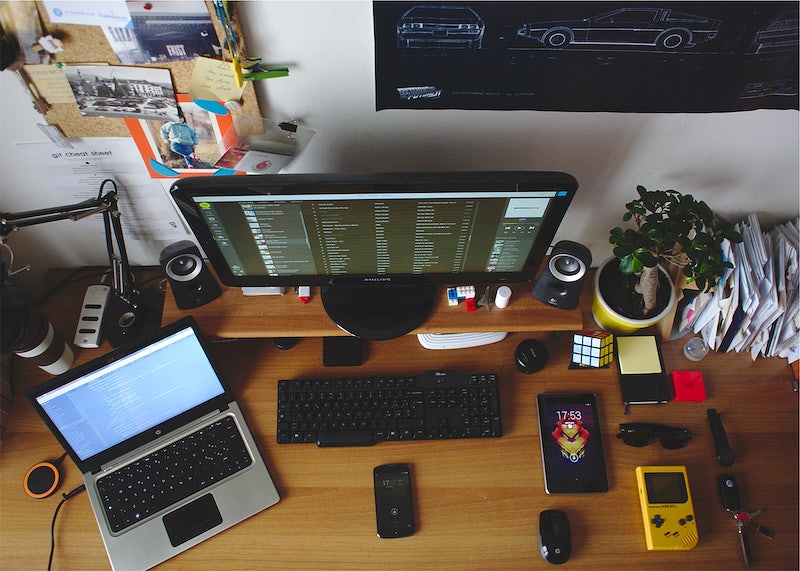As more people embrace remote work, the need for a productive home office has become more important than ever. A well-designed workspace can significantly impact your efficiency, focus, and overall job satisfaction. In this blog post, we will explore why a productive workspace matters, how to choose the right space, essential furniture and tech you need, organization and storage tips, and ways to personalize your home office for comfort and inspiration.
The Importance of a Productive Workspace
Having a dedicated workspace is crucial for productivity. When you set up a space specifically for work, you create a clear boundary between your professional and personal life. This separation helps reduce distractions and promotes a mindset that is focused on tasks and goals. A productive workspace also contributes to better posture, reduced stress, and fewer interruptions, all of which can enhance your performance and well-being.
Research from the Journal of Environmental Psychology suggests that the physical environment significantly influences our ability to focus and be productive. An organized and well-lit space can lead to improved concentration and reduced fatigue, making it easier to stay on task and achieve your work goals.
Choosing the Right Space
The first step in setting up a productive home office is choosing the right space. Ideally, select a room or area in your home that can be dedicated solely to work. This might be a spare bedroom, a corner of your living room, or even a well-organized closet. The key is to find a place that is relatively quiet, away from the main flow of household traffic, and has good natural light. Natural light not only boosts your mood but also helps keep your energy levels up throughout the day.
Consider factors like privacy and comfort when choosing your workspace. If possible, select a space where you can close the door to minimize noise and interruptions. If your home is small and lacks extra rooms, get creative with dividers, curtains, or room screens to carve out a dedicated work area.
Essential Furniture and Tech
Once you’ve chosen your space, the next step is to furnish it with essential items that will support productivity and comfort. Start with a good-quality desk and chair. Your desk should be spacious enough to hold your computer, paperwork, and any other tools you need to do your job effectively. Look for a desk with built-in storage or space for organizers to keep your work area tidy.
Your chair is perhaps the most important piece of furniture in your home office. Invest in an ergonomic chair that supports good posture and reduces strain on your back and neck. A chair with adjustable height, lumbar support, and comfortable padding can make a big difference in your comfort and productivity over long hours.
In terms of technology, ensure you have a reliable computer and high-speed internet connection. Depending on your job, you might also need a printer, scanner, or other specific equipment. Don’t forget about accessories like a good-quality keyboard and mouse, which can enhance comfort and reduce the risk of repetitive strain injuries. Dual monitors can also be a great investment, providing more screen space and improving multitasking capabilities.
Organization and Storage Tips
Keeping your home office organized is essential for maintaining a productive and stress-free environment. Start by decluttering your workspace. Remove any items that are not directly related to your work. Use organizers, filing cabinets, or shelves to keep important documents and supplies within easy reach. Labeling everything clearly can save you time and prevent frustration when searching for specific items.
Consider digital organization as well. Use cloud storage solutions to keep your files accessible and secure. Regularly back up your data to avoid loss in case of technical issues. Apps and tools like task managers, digital calendars, and note-taking apps can help you stay organized and on top of your tasks.
Cable management is another important aspect of organization. Use cable ties, clips, or sleeves to keep cords and cables neat and out of the way. This not only makes your workspace look tidier but also prevents tripping hazards and makes it easier to clean.
Personalization and Comfort
Your home office should be a space that motivates and inspires you. Personalize it with items that reflect your personality and interests. This could be artwork, family photos, or plants. Plants, in particular, can improve air quality and add a touch of nature to your workspace, which can be calming and boost creativity.
Comfort is also key to a productive home office. Consider adding a small sofa or chair for reading or taking breaks. A comfortable rug underfoot, good lighting, and temperature control can all contribute to a more pleasant working environment. Ensure that your lighting is adequate—use a combination of natural light, task lighting, and ambient lighting to reduce eye strain and create a welcoming atmosphere.
Summary and Key Takeaways
Setting up a productive home office is more than just having a place to sit with your laptop. It involves creating an environment that supports focus, comfort, and efficiency. Start by choosing a quiet, well-lit space in your home. Invest in essential furniture and technology that supports good posture and work habits. Keep your workspace organized with effective storage solutions, and personalize it to make it inspiring and comfortable. By taking these steps, you can create a home office that enhances your productivity and makes working from home a more enjoyable experience.


Leave a Reply